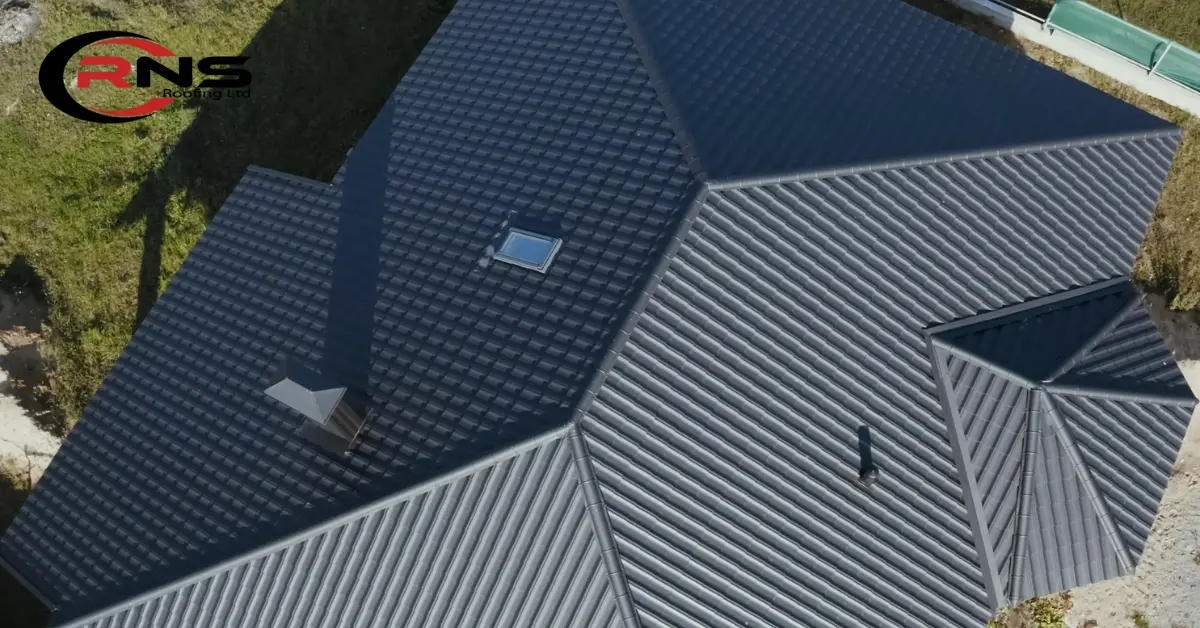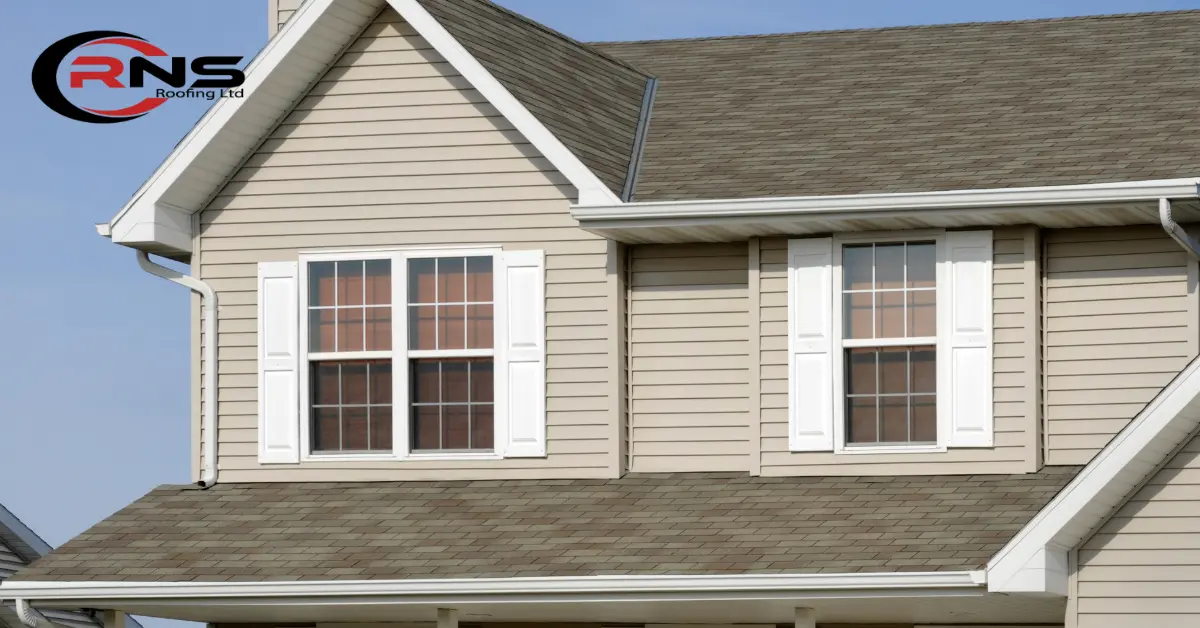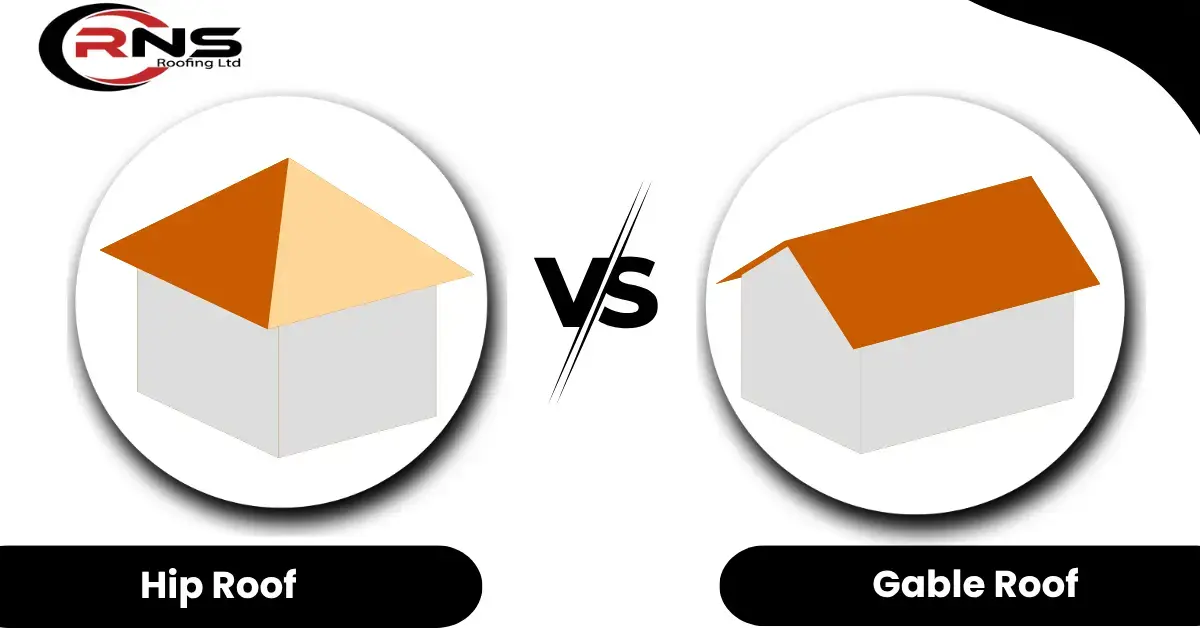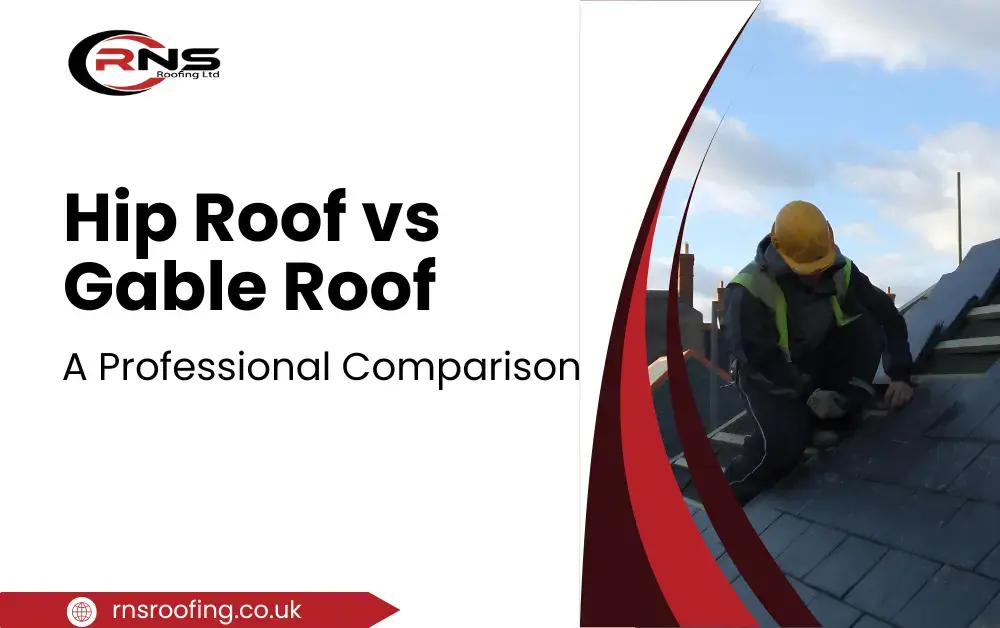You’ll likely need to make many decisions while building a new home or renovating an old one, including what materials to use, how much to spend, and how to design it. Before you start this job, it may surprise you to learn how many various types of roofs there are. The type of roof you select also affects your roof’s functionality and performance against the elements, as well as the home’s overall aesthetic appeal.
Gable vs hip roof are two of the most popular roof styles in the UK; you’ve probably come across them while studying. What differentiates these roofs from one another, and what are the pros and cons of each? Let’s examine the information you need about these well-liked roof designs, specifically hip roof vs. gable roof, to choose the best one for your house.
What is a Hip Roof?

A hip roof, also known as a hipped roof, has slopes on all four sides that meet at a peak or ridge, typically found on rectangular structures. This sloping design makes it more aerodynamic and stable. The hip roof’s consistent eaves and aesthetic appeal make it a common choice for modern homes.
Types of Hip Roofs:
- Mansard
- Pyramidal
- Bonnet
- Cross-hipped
- Hip-and-valley
This style gained popularity in the early 1900s, especially in homes with Victorian and Queen Anne architectural influences.
Now let’s explore a few pros and cons of hip roofs:
Pros of a Hip Roof:
- Consistent Eave Lines and Visual Appeal: The uniform slopes create a cohesive and elegant appearance, adding to the curb appeal.
- Increased Stability: With inward sloping sides, hip roofs provide excellent wind resistance, ideal for areas prone to storms or heavy snow.
- Good for Lower-Sloped Roofs: A hip roof design works well with lower slopes, facilitating water runoff and preventing accumulation of snow and debris.
Cons of hipped roof:
- More Costly: Hip roofs are more expensive than gable roofs, despite their greater stability and longevity, due to their complex design, which requires more materials and installation expertise. However, if specialists install them correctly, hip roofs are a reliable and solid roofing option.
- Reduced Attic Space: The sloping design limits the amount of attic space available.
- Potential Leak Risk: If not properly installed, seams or dormers can allow water to penetrate the roof.
What is a gable roof?

A gable roof is the triangular portion of a wall between the edges of a sloped roof. Gable roofs dominate many UK homes due to their straightforward construction and effective water-shedding ability. They feature two sides with steep slopes and are known for their traditional design.
In summary, a gable roof is visible when a triangle with a vertical orientation is visible up to the roof’s apex. There are many variations of gable roofs, just like hipped roofs. Some common types include:
- Cross-gabled
- Boxed gable
- Open gable
- Dutch gable
- Jerkinhead
Gable roofs are versatile and often seen in both modern and historic buildings. They are also easier to construct, making them a cost-effective option.
Pros of a Gable Roof
- Cost-Effective: Gable roofs use fewer materials and are simpler to build, reducing construction costs.
- Better Ventilation and More Attic Space: The triangular shape allows for larger attic spaces and improved air circulation, making it ideal for loft conversions.
- Efficient Water and Snow Shedding: Due to their steep slopes, gable roofs naturally shed water and snow, reducing the risk of leaks or damage.
Cons of a Gable Roof
- Less Durable in High Winds: The steep slopes make gable roofs more vulnerable to strong winds, which can lift the roof off if not properly installed.
- Lower Curb Appeal for Some: While many appreciate the simplicity of gable roofs, others find hip roofs more visually appealing.
What’s the difference between a hip and a gable roof:

The side slopes are the main difference between a hip and a gable roof. A hip roof slopes downhill toward the house’s walls on all sides. On the other hand, gable roofs feature just two triangle-shaped slopes that extend from the top of the ridge to the base of the eaves. A gable roof is naturally formed with what are called gables, which are triangular-shaped vertical pieces located where the two roof slopes meet. When looking at a gable roof, you will notice that a portion of the roofline is composed of at least two parks of the wall that extend upward.
Let’s explore other key characteristics that distinguish these two popular roof types.
1. Appearance
A hip roof’s consistent slopes give a sleek and smooth appearance, while a gable roof’s distinctive triangular gables offer a more traditional, angular look. Gable roofs are often more noticeable, while hip roofs are valued for their clean and integrated design.
2. Wind Resistance
Hip roofs outperform gable roofs in terms of wind resistance, as the slopes naturally deflect wind, making them ideal for storm-prone areas. Gable roofs are more susceptible to damage in high winds, especially if not properly braced.
3. Water and Snow Management
Both designs are effective at shedding water and snow, but gable roofs excel at this due to their steep slopes. However, hip roofs can handle heavy snow without accumulating as much weight on the roof.
4. Attic Space and Ventilation
Gable roofs offer more usable attic space and better ventilation due to their higher pitch, making them suitable for loft conversions. Hip roofs limit attic space but offer more stability.
5. Cost
Hip roofs are more expensive due to their complex design and the additional materials required. Gable roofs are a more affordable option, making them a popular choice for budget-conscious homeowners.
6. Durability
Hip roofs are usually stronger and more stable, especially during bad weather. Their sloped design supports itself, which helps them stand up better against strong winds. In contrast, gable roofs can be more at risk of wind damage if they aren’t built properly.
7. Solar Panel Installation
Gable roofs provide a larger surface area for solar panels, making them a more suitable choice for those planning to install renewable energy systems. Hip roofs, with their sloping design, may have less available space for panels.
8. Resale Value
Homes with hip roofs tend to be perceived as more upscale due to the sleek, modern design. However, gable roofs remain popular for their classic appeal, and the cost savings can also be a selling point.
Easy Maintenance Tips for Hip and Gable Roofs
Taking care of your roof helps it last longer and keeps your home safe and secure. Here are a few simple tips you can follow, no matter which roof style you have:
- Check your roof twice a year, especially in spring and autumn. Also, inspect it after big storms to spot damage early.
- Clear off leaves, twigs, and dirt that can block water flow or cause leaks. Use a soft broom or blower; don’t use sharp tools.
- For hip roofs, inspect the seams and valleys closely, where water typically flows. These areas can leak if debris accumulates or the flashing comes loose.
For gable roofs, check the ends of the roof (the flat triangle parts) for cracks or loose siding. If your attic becomes too hot, consider installing vents to improve airflow.
Conclusion:
Choosing between a hip vs gable roof depends on several key factors: your budget, the local weather, the style of your home, and what matters most to you. Hip roofs are strong in high winds, help save energy, and give your home a modern look. Gable roofs, on the other hand, are more traditional, easier to build, and give you more attic space.
Take the time to consider what suits your home and lifestyle best. Whether you’re building a new house, updating an old one, or converting it into a care home, the right roof design should match your needs and make your home both safe and attractive.
If you’re unsure which option is best for your property, speaking with experienced professionals, such as roofers in Guildford, can provide valuable guidance. They understand the local building styles and weather challenges and can guide you toward the most practical and visually fitting choice for your home.
FAQs
Which roof design is more common?
Hip roofs are more frequently found in traditional and architecturally designed homes, but gable roofs are more frequently found in residential buildings.
Which roof design is more effective at shedding snow and rain?
Hip roofs may more readily collect snow and debris on their flatter planes, whereas gable roofs, because of their steeper slopes, tend to dissipate rain and snow more effectively.
Can I add dormers to both gable and hip roofs?
Yes, dormers can be added to hip and gable roofs to increase the amount of light, airflow, and space in the upper level or attic.
Gable Roof vs Hip Roof: Which one is more suitable for my home?
The answer depends on what matters most to you. If you want a roof that’s easier to build and gives you extra space in the attic, a gable roof might be the better choice. However, if you live in an area with strong winds or prefer a roof that appears more modern and balanced, a hip roof may be the smarter option. Both have their own strengths, so it’s best to match the style with your home’s design and local weather conditions.

